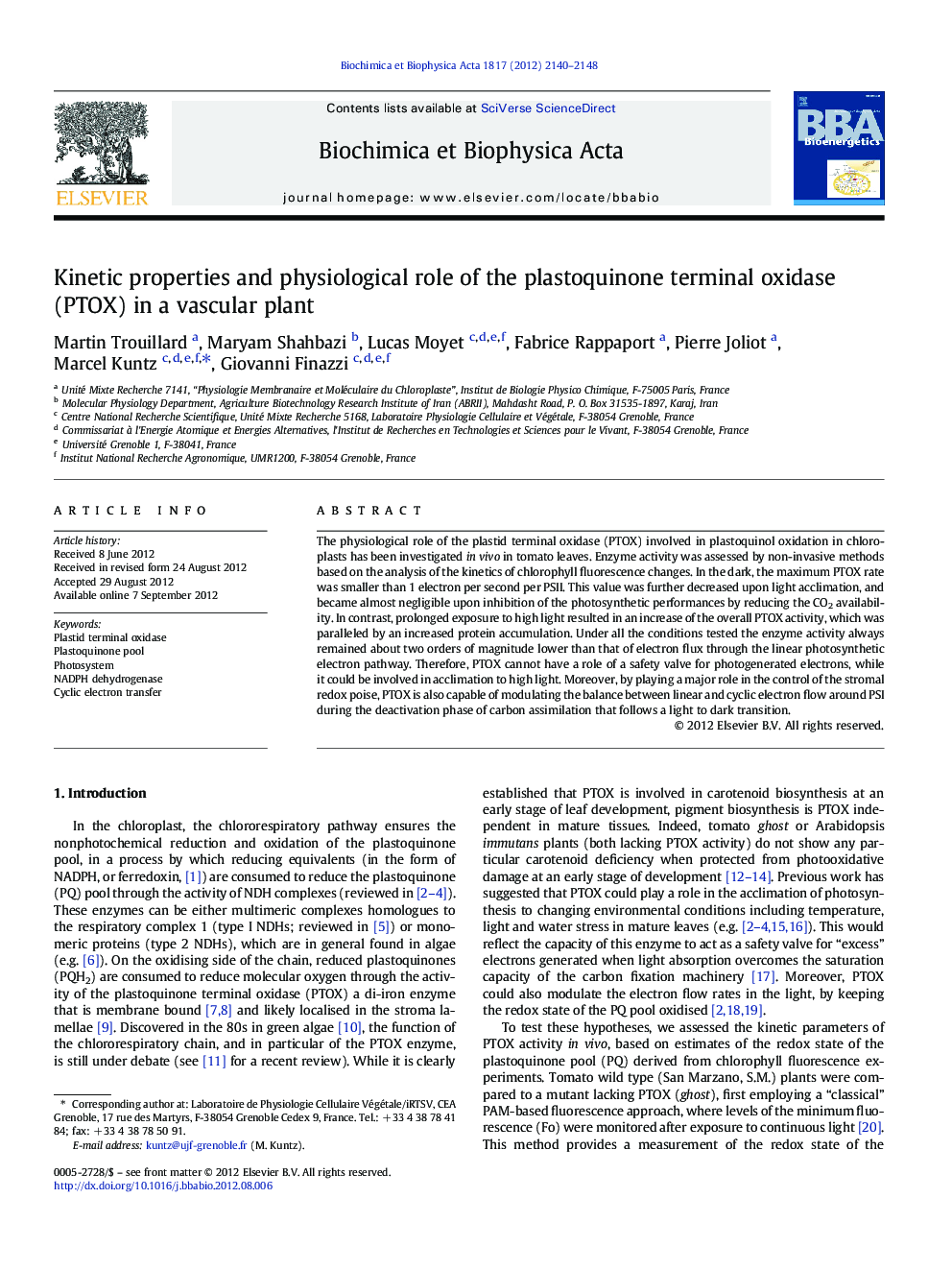| Article ID | Journal | Published Year | Pages | File Type |
|---|---|---|---|---|
| 1942311 | Biochimica et Biophysica Acta (BBA) - Bioenergetics | 2012 | 9 Pages |
The physiological role of the plastid terminal oxidase (PTOX) involved in plastoquinol oxidation in chloroplasts has been investigated in vivo in tomato leaves. Enzyme activity was assessed by non-invasive methods based on the analysis of the kinetics of chlorophyll fluorescence changes. In the dark, the maximum PTOX rate was smaller than 1 electron per second per PSII. This value was further decreased upon light acclimation, and became almost negligible upon inhibition of the photosynthetic performances by reducing the CO2 availability. In contrast, prolonged exposure to high light resulted in an increase of the overall PTOX activity, which was paralleled by an increased protein accumulation. Under all the conditions tested the enzyme activity always remained about two orders of magnitude lower than that of electron flux through the linear photosynthetic electron pathway. Therefore, PTOX cannot have a role of a safety valve for photogenerated electrons, while it could be involved in acclimation to high light. Moreover, by playing a major role in the control of the stromal redox poise, PTOX is also capable of modulating the balance between linear and cyclic electron flow around PSI during the deactivation phase of carbon assimilation that follows a light to dark transition.
► The chlororespiratory terminal oxidase (PTOX) activity was assessed by non-invasive methods. ► PTOX activity is not compatible with a flux expected for an effective photosynthetic electron sink. ► PTOX influences the transition from linear to cyclic electron flow during a dark recovery.
